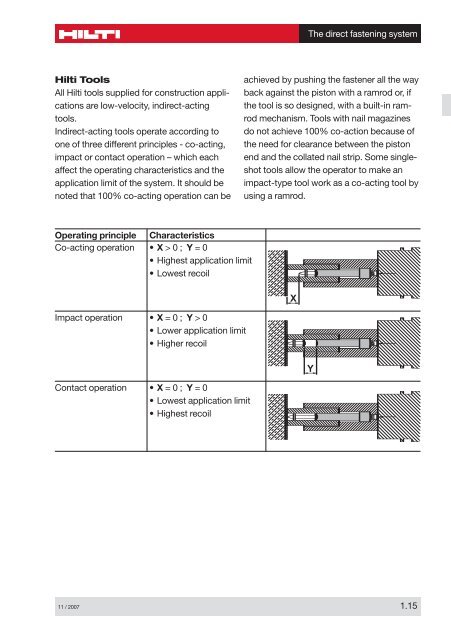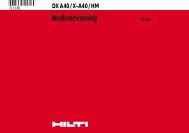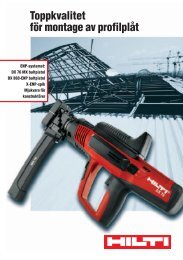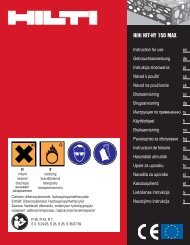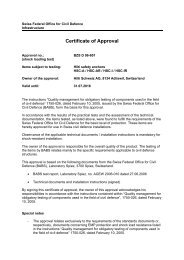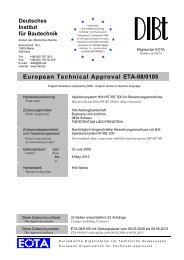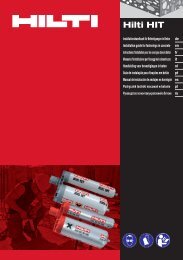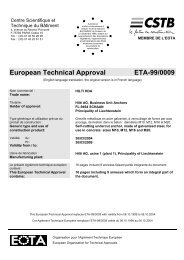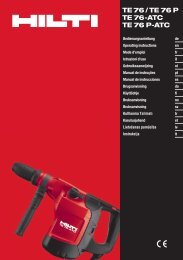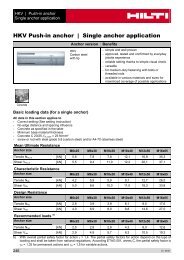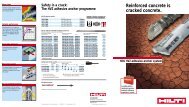00 Contents - Hilti Svenska AB
00 Contents - Hilti Svenska AB
00 Contents - Hilti Svenska AB
Create successful ePaper yourself
Turn your PDF publications into a flip-book with our unique Google optimized e-Paper software.
<strong>Hilti</strong> Tools<br />
All <strong>Hilti</strong> tools supplied for construction applications<br />
are low-velocity, indirect-acting<br />
tools.<br />
Indirect-acting tools operate according to<br />
one of three different principles - co-acting,<br />
impact or contact operation – which each<br />
affect the operating characteristics and the<br />
application limit of the system. It should be<br />
noted that 1<strong>00</strong>% co-acting operation can be<br />
Operating principle Characteristics<br />
Co-acting operation • X > 0 ; Y = 0<br />
• Highest application limit<br />
• Lowest recoil<br />
Impact operation<br />
Contact operation<br />
• X = 0 ; Y > 0<br />
• Lower application limit<br />
• Higher recoil<br />
• X = 0 ; Y = 0<br />
• Lowest application limit<br />
• Highest recoil<br />
The direct fastening system<br />
achieved by pushing the fastener all the way<br />
back against the piston with a ramrod or, if<br />
the tool is so designed, with a built-in ramrod<br />
mechanism. Tools with nail magazines<br />
do not achieve 1<strong>00</strong>% co-action because of<br />
the need for clearance between the piston<br />
end and the collated nail strip. Some singleshot<br />
tools allow the operator to make an<br />
impact-type tool work as a co-acting tool by<br />
using a ramrod.<br />
11 / 2<strong>00</strong>7 1.15<br />
X<br />
Y


